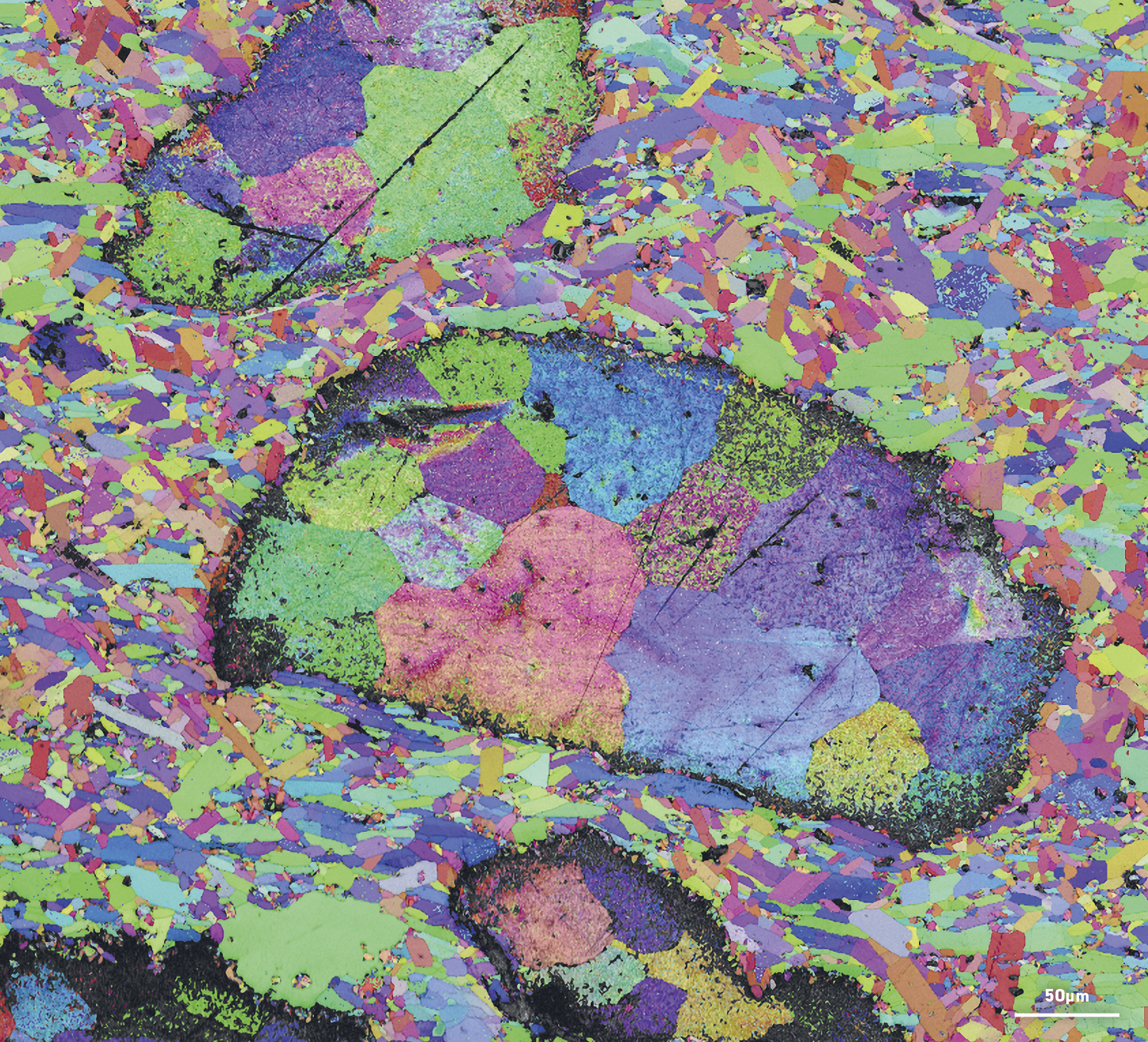A/Prof. Gwénaëlle Proust from the University of Sydney and collaborators at Texas A&M University have been working on a solution to this problem. They are developing new composite materials made by combining lightweight aluminium with a high-performance ceramic. These composites are fabricated by making a titanium carbide ceramic foam that is then infiltrated by molten aluminium. When tested in compression, the composite displayed exceptional mechanical properties at both ambient and elevated temperatures.
Compared to the corresponding aluminium alloy, the composite achieved a compressive strength ten times higher at ambient temperature and 14 times higher at 400 °C. Electron backscatter diffraction and X-ray microtomography at Microscopy Australia’s University of Sydney facility, carried out before and after mechanical testing, revealed that there was an even distribution of the two phases with the pores perfectly filled with aluminium. They also showed that the composite structure was not significantly affected by heating.
The initial success with these metal–ceramic composites opens the way to fulfilling the requirements of next-generation civilian and defense aircraft. By controlling the processing parameters, it will be possible to control the microstructure of the composites and therefore to optimise the material for specific applications.

Electron back scatter diffraction image of the fabricated ceramic composite. The colour of each grain indicates its orientation in the substrate. The pore in the centre of the image is completely filled with larger aluminium grains.
Array
July 24, 2017